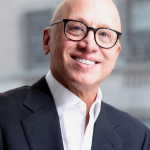2020 Expanded Discussion
The field of dermatology is an evolving practice, as it adapts to an ever-advancing technology landscape, both in and out of the examination room. The tools available offer the promise of great results for both their patients and practices alike but are not without their potential concerns for the physician. In this ever-changing field, physicians often find themselves challenged by colleagues on their approaches to treatments, techniques or practices.
From rescuing vision loss after epidermal fillers to new Nd:YAG laser technology and safe social media usage, Drs. Julie Woodward, Hema Sundaram, David Goldberg and Zakia Rahman offer their expert and unique viewpoints on a variety of cosmetic concerns. These topics may be considered controversial but are nonetheless becoming increasingly important points of discussion.
Rescuing Vision Loss After Receiving Dermal Fillers Near the Eyes
Dermal fillers, primarily comprised of hyaluronic acid, are a very popular way for physicians to sculpt the face and give patients a more youthful contour. While widely considered safe for most patients, there are cases in which injections go awry and interfere with a patient’s vision or cause blindness. Board-certified oculoplastic surgeon and ophthalmologist, Dr. Julie Woodward of Durham, North Carolina has a unique point of expertise regarding rescuing a patient’s sight should vision loss occur after dermal filler injections on the face.
It’s important to note that, according to Dr. Woodward, vision loss from periocular injections is exceedingly rare, and there are likely less than a dozen cases in the literature. But, it does happen. She adds, “Vision loss is more likely to be caused by injections into the nose, glabella or forehead as opposed to the infraorbital rims.”
In the event of vision loss after injections, many non-ophthalmologist physicians consider using hyaluronidase to break down and help dissipate the hyaluronic acid. But, Dr. Woodward says, “There is no clear proof that hyaluronidase works, but it might. Part of the issue in determining proof of efficacy is that the vision and baseline exam is usually not recorded prior to injections.”
Hema Sundaram, MD of Fairfax, Virginia, a board-certified dermatologist specializing in cosmetic surgery, adds that a prerequisite for the hyaluronidase to actually work is that it must be able to pass through the arterial wall. In a study on fresh, frozen cadavers, she found that the hyaluronidase does pass the arterial wall and dissolves the hyaluronic acid filler. Dr. Sundaram explains that with cadavers, they aren’t working with the same situation as they would in vivo, primarily because of the rapid breakdown of the body after death. She adds that a February 2019 publication in Ophthalmic Plastic & Reconstructive Surgery found that hyaluronidase doesn’t penetrate the external wall of the arteries in a rabbit model.
Dr. Woodward says injectors are often concerned about a potential allergic reaction to the hyaluronidase, but she says that is also exceedingly rare. “Ophthalmologists have been injecting hyaluronidase into the retrobulbar space since 1976. I have used it for at least 10,000 procedures and have never seen an allergic reaction,” says Woodward.
If blindness or vision loss does occur, she says some injectors are afraid to try and dissolve the filler by placing a needle into the eye’s orbit. She adds, “A retrobulbar hemorrhage from this injection is exceedingly rare. I have only been asked to assist with one hemorrhage from a retrobulbar injection in my 22 years of practice, and the patient’s vision returned to baseline.” But, she adds that injectors should have apt knowledge of facial contours to feel comfortable injecting in the first place. “My philosophy is that if an injector has a good enough artistic sense to sculpt the face with fillers, they should also have good enough spatial relations to inject hyaluronidase without injuring the globe,” says Woodward.
So what should an injector do to rescue vision loss should it occur? Dr. Woodward has an upcoming publication that lays out a suggested rapid fire protocol for just that. The publication includes proper techniques for non-ophthalmologists to follow while still allowing them to stay in their comfort zone.
Dr. Woodward advises, “Prior to ever doing injections, the non-ophthalmologist should consider having a relationship with an ophthalmologist that would agree to see the patient on an urgent basis.” However, should blindness actually occur, she says the first fifteen minutes are critical. “A physician should first document a brief exam and consider a hyaluronidase injection. The exam needs a visual acuity, check for afferent pupillary defect, diplopia and confrontation visual fields immediately. There are free apps that can be downloaded on the cell phone that can help with the baseline exam. This should take about 2-3 minutes.” She also advises that an ophthalmologist should be called immediately should an injection of hyaluronidase be considered necessary.
If a physician wants alternatives to hyaluronidase, Dr. Woodward says there are other options including hyperbaric oxygen, aspirin and a digital massage. But, it is important to note these options do not have evidence of efficacy. She adds, “Other debatable options that can be considered, include nitropaste, viagra…and breathing into a paper bag.”
Dr. Sundaram says that it may be time to consider fat and non-hyaluronic acid fillers as safe options. She says that, in terms of vascular emergencies, it may be time for physicians to start to consider how “dispersible” a filler is as opposed to how “reversible” it is.
Dr. Woodward advises that caution is the best medicine to prevent any opportunity for vision loss to occur in the first place. She advises, “Small aliquots of less than .03ml per site are recommended. Also, a needle should never be aimed towards the globe.” If an injector wants to avoid injecting near the eyes altogether, there are other options that could provide similar results in some patients. She offers, “Periocular lasers and blepharoplasty with or without fat transfer/injections are other great options in addition to fillers.”
New Developments with Nd:YAG Lasers
Nd:YAG lasers have been around for twenty plus years, but recently have been advanced to include microsecond, nanosecond, and picosecond systems in addition to the original millisecond system. While very effective in treating acne scarring, tattoo removal, hair removal and skin rejuvenation in all skin colors, they are not without their risks. David Goldberg, MD of New York, New York pointed out that “the biggest issues that arise with millisecond lasers are that they include too high an energy use and less than optimal cooling, which can lead to unwanted scarring.”
Dr. Goldberg notes that with tattoo removal, it does take fewer treatments with the pico- and nano-second device, but in the end, still prefers the original millisecond device for the removal of newer tattoos, simply because it works better. He adds that while nothing beats a laser for tattoo removal, they are not without their potential disadvantages. Pain, hypo-pigmentation and burns are all possible with using Nd:YAG lasers for tattoo removal. Dr. Goldberg says, “Set expectations with your patients and make sure they know that it can take anywhere from 10-20 laser appointments to successfully remove a tattoo.”
Additionally, Dr. Goldberg points out that there hasn’t been a study that compares using lasers to treat acne scarring in comparison with a Sham, or placebo, device. He is working on one, however, and notes that in the study, researchers did find statistical significance between the active treatment site and the placebo.
Safe Social Media Usage by Physicians
Social media platforms like Instagram, Facebook and Pinterest are rapidly becoming a key area for influencers to share “beauty tips” with their thousands (or millions) of followers. But, is the information they are offering accurate or even safe?
Zakia Rahman, MD of Palo Alto, California suggests that as experts in hair, skin and nails, dermatologists have a responsibility to educate and engage with not only patients but with the entire social media community. “Social media has changed the way we engage with the world and with others. There is potentially misleading or dangerous misinformation spread by non-dermatologists online that we can counteract by staying engaged,” says Rahman. “For example, I saw a post on Instagram encouraging selenium supplements for hair thinning by a “skin care doctor” (not a dermatologist).”
Furthermore, physicians have potential marketing opportunities with advancing social media options, but are finding out there are considerations that need to be taken to use these platforms safely and legally.
By sharing engaging (and accurate) content regarding skin care, cosmetic treatments, hair treatments, plastic surgery and more, physicians can foster a positive reputation and build authority in their communities. However, Dr. Rahman said they should be cautious and smart about what they share online, and for her, that means never placing self-interest above self-respect. She adds, “As medical doctors, we have invested many years in our education and training. We have agreed to uphold professional ethical standards, and we should not risk losing our license that has taken years to earn.”
Dr. Rahman also says physicians don’t need “celebrity” or “influencer” status with millions of followers to be effective at sharing helpful information. Dr. Rahman says, “Celebrities have a large reach, but dermatologists, who may not have as much reach, still have significant resonance and relevance. This means we can be more engaging.”
Before engaging in social media partnerships, physicians should be well-versed in FTC guidelines for disclosing endorsements, sponsored posts and all-expense paid trips. While the average influencer has largely gone untouched for not disclosing partnerships, physicians may not. According to Dr. Rahman, if the guidelines for disclosure are met, then post away!
Dr. Rahman says the core aesthetic doctors, including dermatologists, plastic surgeons, facial plastic surgeons and oculoplastic surgeons, can collaborate to present useful and appropriate information on social media. What does that content look like? Dr. Rahman adds that it can mean different things for different physicians, and it’s okay to have a little fun! She concludes, “It’s a chance to let your personality shine through. Being engaging and entertaining as well as educational and professional are not mutually exclusive.”
What are some treatments you perform that may be deemed controversial? We’d love to hear your comments below.
Contributing Physicians:
Julie Woodward, MD – Professor of Opthamology and Dermatology and Chief of Oculofacial Surgery at Duke University
Hema Sundaram, MD – Board-certified dermatologist in FairFax, VA and Rockville, MD
David Goldberg, MD, JD – Board-certified dermatologist, Clinical professor and former chair of Mohs Surgery and Laser Research in the department of Dermatology at New York’s Icahn School of Medicine at Mount Sinai.
Zakia Rahman, MD – Clinical Professor of Dermatology at Stanford University







Leave a Comment